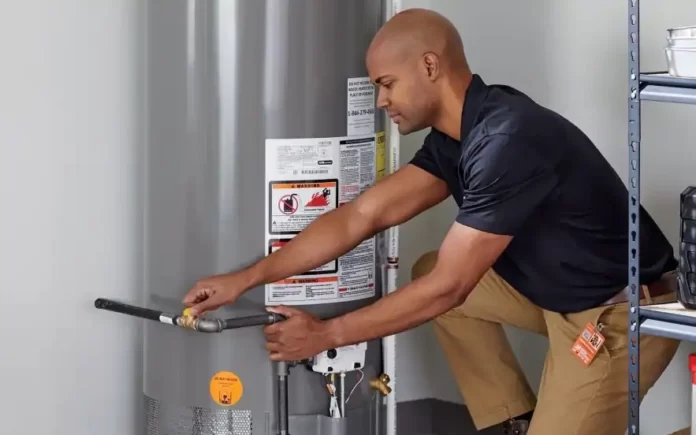When you have a hot water heater expansion tank, there are some important things to keep in mind when it comes to maintaining it. You need to make sure you check the water pressure in the tank and that there are no leaks. This way, you can prevent issues from occurring. Moreover, you will also be able to know if you need to replace it or not.
Checking the pre-charge pressure
When it comes to the expansion tank in your hot water system, there are a few things you can check to make sure everything is working properly. First, you should check the pressure of the tank. If the pressure is too high or low, it could be a sign that something is wrong.
The pre-charge pressure for a hot water heater expansion tank is usually 12 psi. This is the standard setting for most manufacturers. But, you should always double-check it to be sure.
If you find that your tank is overfilled, it may be because the bladder is no longer functioning. This can cause the tank to leak or burst. Fortunately, you can fix the problem.
Checking for leaks
Leaks in your hot water heater expansion tank can be a big safety issue. The leaking water may be damaging your pipes or even your flooring below the tank. It may also be an indication that the tank itself needs to be replaced.
Leaks in the expansion tank can be caused by a corroded connection. This is a fairly straightforward repair. Just use thread sealer to fix the connection.
In addition to corrosion, a loose connection can cause a leak. This is especially common for flexible water supply tubes. The first step is to remove the insulation around the supply tubes to inspect them.
Over pressure
When you have an expansion tank in your hot water heater, you are probably experiencing some overpressure. This can cause problems in your water heater expansion tank and plumbing system and can lead to burst pipes and leaks. The good news is that you can avoid this scenario by taking the proper precautions.
The first step is to figure out which part of your plumbing system is affected by the overpressure. If you have several expansion tanks connected to the same pipe, you could experience a pressure increase. This can be caused by a variety of factors.
One of the best ways to prevent this from happening is by installing a backflow preventer. If you have municipal water, you should install a backflow preventer in every house.
Hydronic airlock
Having a hydronic airlock in your hot water heater can be a serious problem. It can lead to no hot water, condensation build-up, and rust. If you are experiencing any of these problems, the first step is to shut off the pump and work down the system.
If you can, it’s recommended to have a professional plumber take a look at your system. They will be able to tell if you need a diaphragm replacement or a new tank.
If you have an expansion tank that is leaking, you should replace it. If you cannot, you may be able to attach an air compressor to the valve attachment and refill the tank.
Reliability issues
If your water heater is not running properly, it is a good idea to check out its expansion tank. This will give you a look at how it works and help you to avoid costly repairs in the future.
An expansion tank is a simple device that is used to provide room for larger amounts of water to flow through. It allows the flow of air to be isolated from the water and prevents condensation from building up on the inside of the tank.
If you are experiencing problems with your hot water heater, you can call in a plumber for a thorough inspection. This will allow them to determine the root cause of the issue and make sure that the tank is not leaking.
Cost to install or replace
There are a number of factors that go into the cost to install a hot water heater expansion tank. The size of the tank, who are going to install it, and other costs are all important.
An expansion tank is a device designed to take the extra pressure that can occur when you use too much hot water. It is also used to prevent backflow. These devices are usually required by city code.
Depending on your location, you may need to get a permit. The cost of obtaining a permit will vary, but it is usually not more than a couple of hundred dollars. The local building department will be able to tell you if you need a permit or not.








